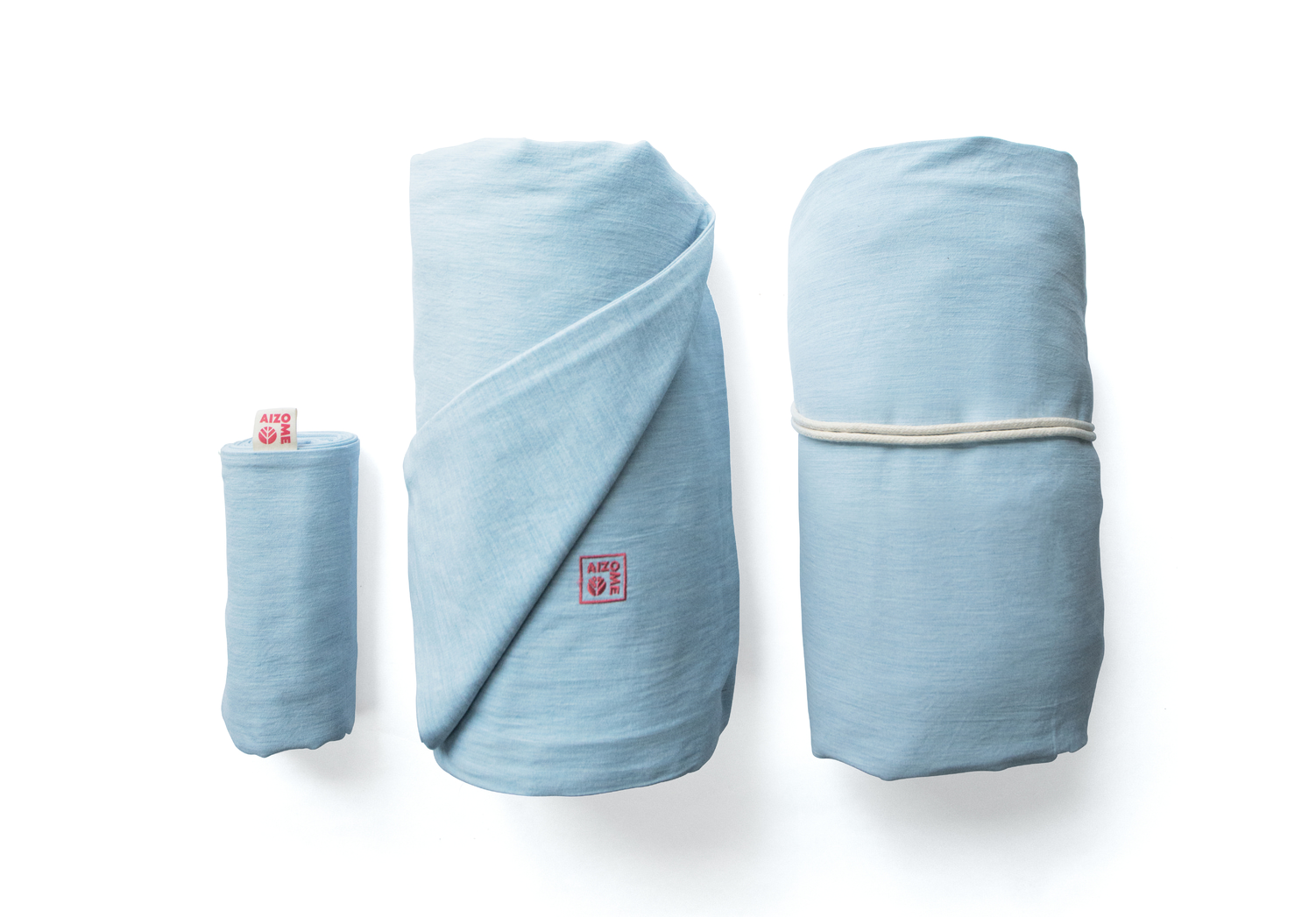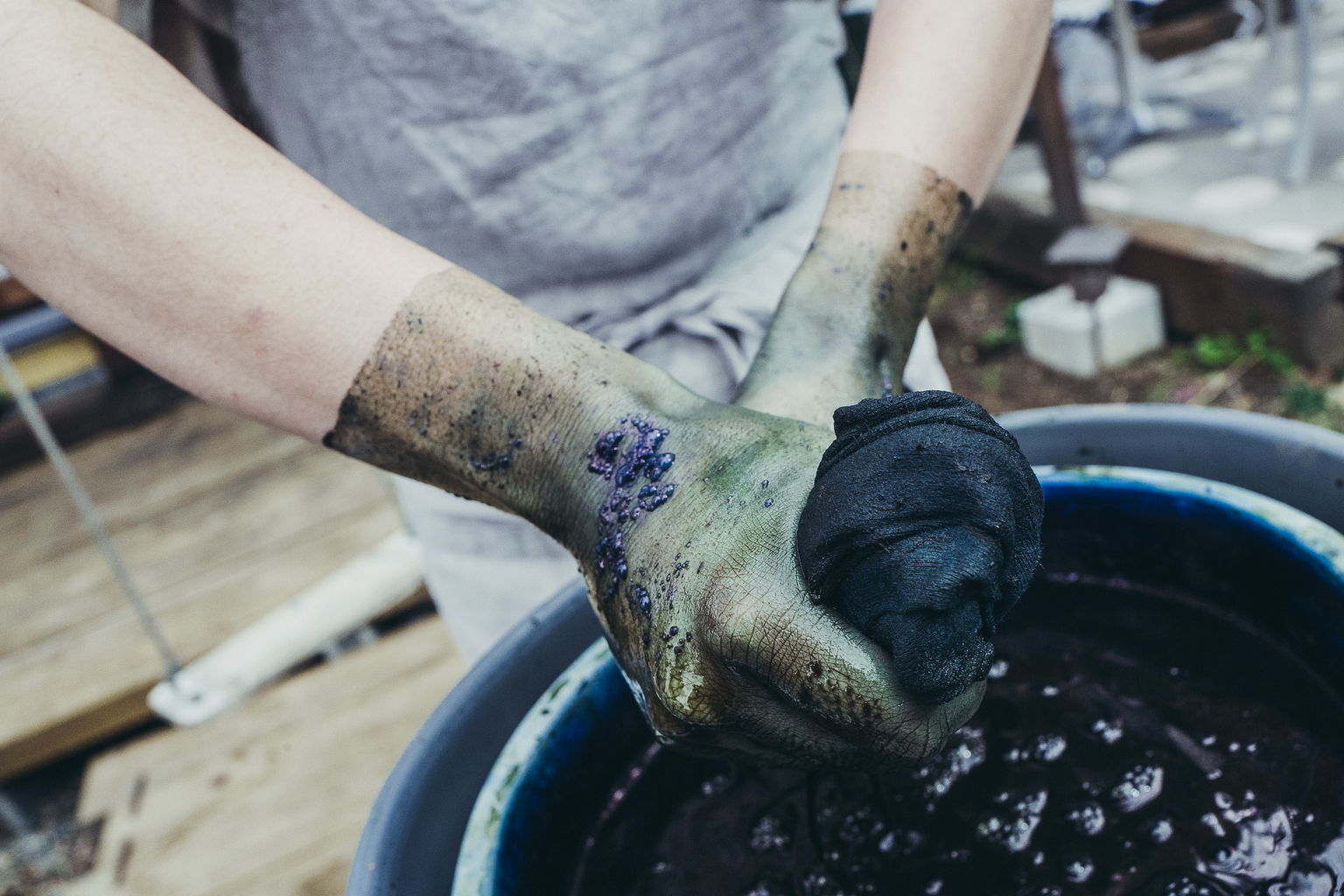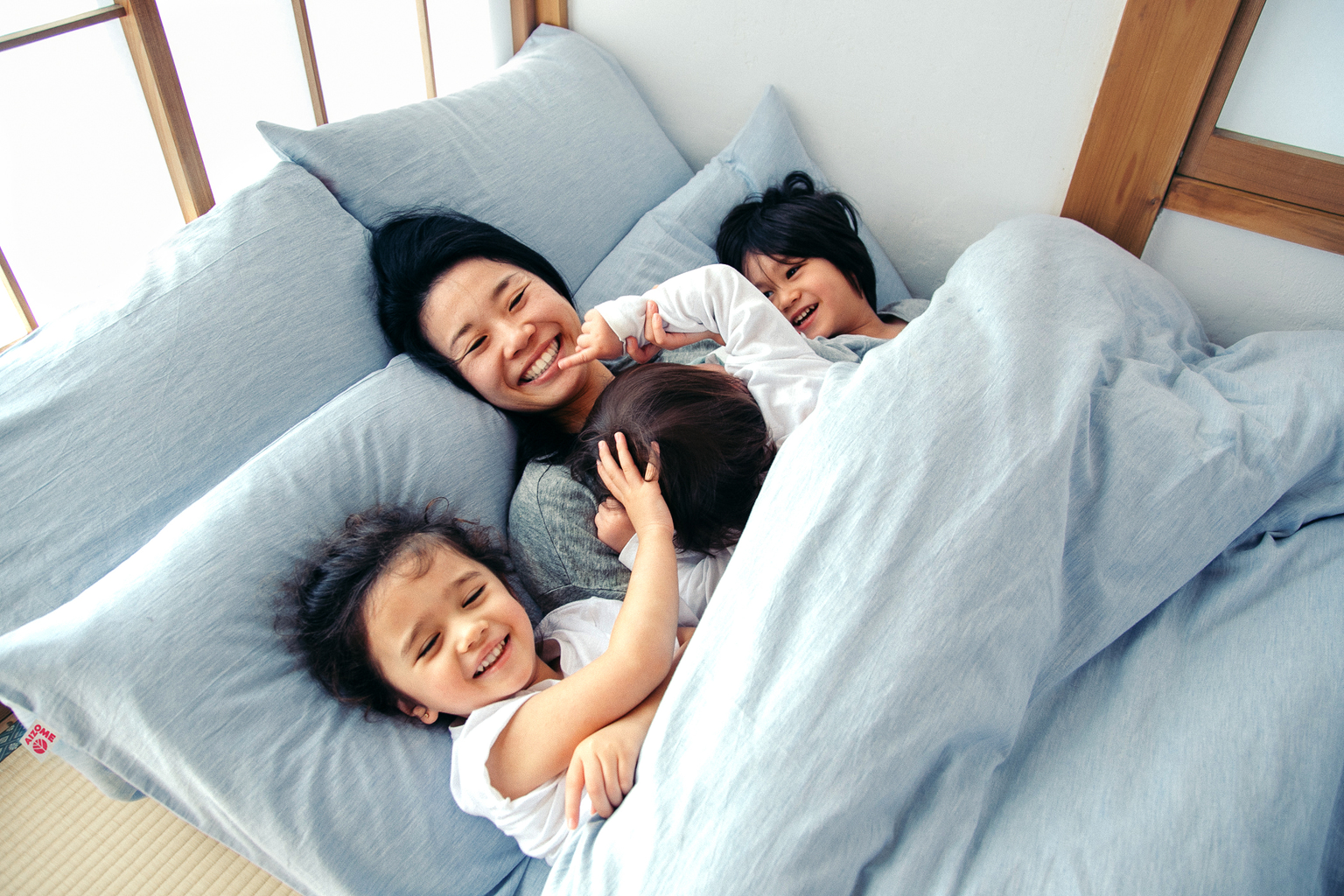In a city like Tokyo a good night’s sleep is critical. Dealing with the constant rush requires strength, an almost religious level of calm, and preferably a solid eight hours of rest every night. So if (like me) your bed is also your best friend, you might be shocked to hear that your regular bed sheets are probably holding you back from getting the restful sleep you need. But don’t despair. Tokyo startup Aizome Bedding has been aware of the hidden evils lurking in most commercial sheets for some time now, and they want to help you “start a revolution from your bed”.
Your skin “is not an impenetrable barrier,” explains Aizome Bedding co-founder Michel May. “It absorbs an incredible amount of everything we touch.” After realizing the damage caused by harmful chemicals that we unwittingly surround ourselves with at bedtime, May and his team of textile, quality management, and dermatology experts sought to create sheets that are better for you and better for the planet, too.
Surprisingly, Aizome Bedding is the first company of its kind to utilize the traditional Japanese art of aizome (indigo dyeing) to improve your sleeping experience – and your life – naturally. We got the chance to chat to them about their manufacturing processes and the science behind indigo dye.
Why did you decide to start Aizome Bedding?
Because we love textiles, especially the craft and art of dyeing with natural indigo in Japan, where we live. So we dye with the actual indigo plant, not the chemical version that is common today. In an age where people look to reduce pollution and want to live healthier, it seems the perfect time to invest your passion and love in a company that dyes only with plants. Our first product, the original Aizome Bedding set, is made only from two plants: indigo and cotton. Natural dyes were replaced with easy-to-produce chemical dyes during the industrial revolution, albeit with little regard to environmental pollution and potential sides effects on our health. Now we not only understand these negative effects better, but can also scientifically appreciate the benefits of natural dyes for the human body.
For those who may not have heard of it, what is the aizome, or indigo dyeing, technique?
Simply speaking, aizome is the Japanese word for dyeing textiles with natural indigo. While all cultures have had different forms of dyeing, the Japanese have dyed almost exclusively with indigo for roughly 400 years, meaning it is safe to say that the level of sophistication reached here is unparalleled. Here is what is really special about a real indigo dyer: she or he is able to bring the blue color of a green leaf onto the textile without using any artificial or synthetic chemicals. A sophisticated fermentation process is at play where the color vat needs to be constantly checked. The end result is stunningly beautiful and feels great on your skin.
How does natural indigo dye act as a soothing, anti-bacterial, and anti-inflammatory agent?
Today we tend to think of color in a superficial way. But dyeing with various colors goes way back. By the end of the 19th century all textile coloration was made with plants, fruits or animal products. The color was not only chosen for aesthetic purposes but also for the qualities it would bring to the textile, such as durability or keeping insects away. These are common properties of natural products, and making them part of the attire makes total sense. Indigo, whose active agent is tryptanthrin, is an absolutely fascinating plant that has been used for millennia in various cultures for its medical properties, especially its benefits to the skin. This includes a mild anti-bacterial agent as well as a tendency to keep insects and other pathogens away. It reduces further stress to the skin and allows for a natural healing process that usually happens when we sleep. Conventional bedding textiles are chemically dyed and often contain polyester and residual toxins from the dyeing process, which put further strain on your skin.
You are currently the only company using indigo dye for linen and bed sheets. Why haven’t other companies caught on yet?
We are the only natural dye company that makes bed sheets, that is correct. This is probably because of our background in healthcare and the fact that we are very critical of the residual chemicals and textile. The science is pretty clear on this. But there are other companies that are trying to revive natural dyes for consumer products, mostly with an environmental perspective. Patagonia has recently started a small series of natural color dyes. Momotaro jeans and other “denim lover” brands have continued to work with natural indigo.
The problem with natural dye products (natural indigo or others) for the consumer market is twofold: for the consumer and the producer. Natural dyes have a tendency to wash out. We solved this by using a coloration process that has the highest standard of colorfastness. This has been achieved with a new and really sophisticated sonic wave dyeing technology. The problem for the producer is the higher production cost. In the textile industry, many producers have crazy high mark-ups between sales prices and production price. Our products cost a lot to make, as the ingredients needed to make natural dyes are more costly than those of chemical dyes, which are made from petroleum and coal-tar. However, we believe that through a direct distribution model we can pass on the value directly to the customer.
Tell us more about the “sound wave technology” that stops the dye from fading over time.
The basic process is traditional: We use only cotton, indigo and water. We enhance this with a novel sonic wave technology consisting of sonic energy in the form of sound waves with frequencies above 20,000 oscillations per second. In liquid, these high-frequency waves cause the formation of microscopic bubbles. Collapsing bubbles generate tiny but powerful shock waves, which result in high-velocity microjets directed towards the solid surface of the yarn and significantly increase in the rate of the mass transfer between yarn and liquid. The result is highly colorfast textiles made without any chemicals.
Your sheets are great for people with sensitive skin – will they also benefit people with normal skin types?
Yes. There are three types of irritation that people suffer from in their bed. One of them is chemical irritation, which is often the result of low quality textiles, dyestuff and added chemicals. For example, polyester sheets have to be legally non-inflammable for flame-retardants to be used. What a nasty cocktail. We don’t use any of that. Natural indigo is a flame-retarding agent.
The second is mechanical irritation, which simply means friction. We use a fine high thread count sateen weave for the linen to be wonderfully smooth. This helps facial skin especially. Nobody likes to wake up with frizzy hair and sleep lines. With Aizome Bedding, you can say goodbye to such unpleasantries forever.
The third and final one is pathogenic irritation. Everybody has heard the rumor of the millions of bed bugs and mites living in your bed. And yes, the rumor is true. The reason being that synthetic materials are an ideal breeding ground for such little creatures. Natural materials like cotton and indigo have anti-pathogenic properties that get rid of such bacteria overgrowth.
How important is sustainability in your manufacturing processes? What do you think is the future of sustainable textile manufacturing?
My favorite question! I would say that sustainability and a zero-waste production process is at the core of Aizome Bedding. We know about the bad working conditions at many textile companies and are becoming increasingly aware of the pollution emitted. I believe that dyeing has been overlooked a little bit. You see, 80% of the water usage in textile production happens during dyeing. And where is the dyeing done? Mostly in countries with poor or no wastewater regulation. Natural dyes not only use very little water, but all water used can actually be reused as fertilizer. Of course, natural dyes are renewable sources. Conventional dyeing relies on petroleum, coal-tar and heavy metals, which are neither degradable nor sustainable. The future of sustainable textiles looks bright. We live in a great time where consumers have awakened and are asking questions, which offers a great potential for our community.
What does a night’s sleep with Aizome Bedding sheets feel like?
So, so soft! Honestly, I can tell you that I don’t want to use any other bedding ever again. See, the other day I had to sleep in a hostel-type hotel that had sheets with some prints and you could just tell they were cheap. I woke up and noticed how sweaty I felt. I strongly feel that if you try Aizome, you just don’t want to go back to your old bedding again. You spend one-third of your lifetime in bed, and it is the place where your body recovers to do all the amazing things you want to achieve. There shouldn’t be any compromises to your sleep quality.
You have a crowdfunding campaign launching in November?
We find crowdfunding a great way to reach a community without using outside investment. In June we started our first campaign on Indiegogo to test the waters with the idea in mind to sell maybe 100 sets and a funding goal of $10,000. We cleared that in the first day and ended up selling to 43 countries with offline and online donations totaling over $100,000. This whole endeavor proved a challenge, but now we have actually produced our bed sets and are shipping them all around the world. The next crowdfunding will be on Kickstarter. I am so excited when I think about it. After that we will go to retail and already have some partners ready. So this new crowdfunding is the last chance to get Aizome Bedding at campaign prices, which can be as much as 40% off.

You heard them: now is the chance to get your hands on a set of all-natural bed sheets at a fraction of the normal cost. Aizome Bedding will launch their Kickstarter campaign on November 12. For more information about the brand check the links below:
Website: www.aizomebedding.com
Instagram: www.instagram.com/aizomebedding
Facebook: www.facebook.com/aizomebedding/
Updated On April 23, 2021











